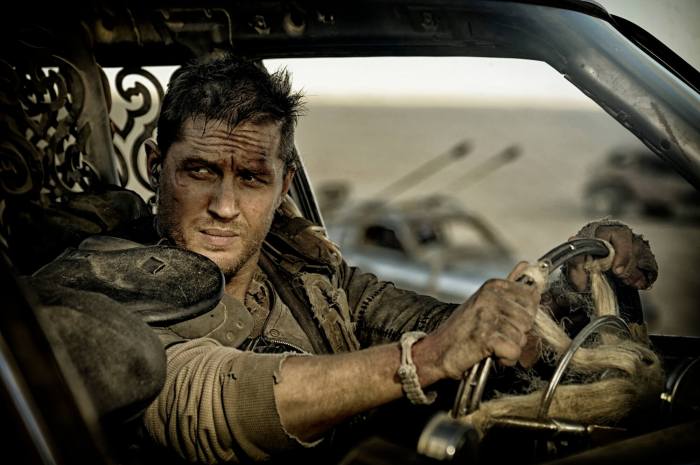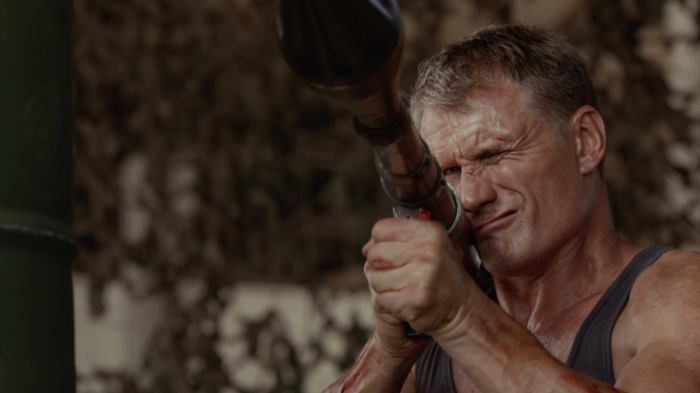Australian director George Miller made film history with cult favorite “Mad Max” and its global hit follow-up, “The Road Warrior.” Now, 30 years after the release of “Mad Max: Beyond Thunderdome,” Miller returns to his roots with a new chapter in the saga — and a master class for modern CGI-soaked blockbusters in how things are supposed to be done. What did you notice about how the nuts and bolts of filming these kinds of action scenes has changed in the last 30 years? Having said that, for instance, film language has evolved in those 30 years, audiences have evolved, storytelling has evolved. And working with digital cameras, you can put them anywhere. If you smash one — and we smashed several — it wasn’t very costly because you go to the local airport and buy another one for $2,000 and so on. But most of all, when I did “Road Warrior” we had no video split, so we’d wait a week to see dailies because we’d have to go to Sydney to get them developed. And now I was watching not only the camera live while pretty kinetic action was happening, but also I was watching several cameras. Often I’d sit in a van traveling along with a bank of almost live cameras. None of that was available three decades ago. Did you try using drones for any of the shots? You’re kind of responsible for most of this, I think, but why is Australia such a good place to set post-apocalyptic films? RELATED:Nicholas Hoult goes nuts
These films have some pretty devoted fans. Anything stick out in your memory? I had a sort of backwards introduction to the world of Mad Max because I saw “Weird Science” first. Did they even ask your permission for that? Well, it’s such an iconic franchise and iconic look. RELATED:‘Mad Max: Fury Road’ is an action lover’s fever dream, also insane You have such an eclectic filmography, between the “Mad Max” films, “Babe” and its twisted sequel, the “Happy Feet” films. What do people most often reference? Follow Ned Ehrbar on Twitter:@nedrick
Well, the essential decision was to go old-school in terms of the events that were happening. There are visual effects in the movie — that big dust storm or stuff like that, or erasing the wires that kept everyone safe — but it was metal on metal, human on human, and often the main cast in apparent jeopardy. That makes sense because it’s a film that doesn’t defy the laws of physics, there’s no flying men or spacecraft or anything magical. It’s very rooted in the earth and reality. And shooting in continuity and putting everyone in an extreme slow motion version of what really happens — except people didn’t get shot or anything like that — but it was them driving across a big expanse of desert being chased by an armada of vehicles.
It’s interesting how things change so much. We were desperate to, and we worked the drones but they weren’t legal for risk and through insurance — they’re slow to catch up. And I said, “Wait a moment, if anything happens and a drone hits somebody, that’s going to be far less devastating than if a helicopter hits somebody.” But they said, “No, you’ve got to use the helicopter.” But now they’re legal. But we did use the drones to map landscape and then use it digitally.
Great, great question. Most of the population lives on the coast, it’s essentially a desert that was best inhabited by the indigenous people, who were desert people, and they had to wander. They didn’t have domesticated animals — horses, cows, pigs, etcetera — so they really had to live off the land very well. There’s never been a war there, it was a prison colony — and it was like sending someone to Mars if you came from Ireland or particularly Britain for having stolen a piece of bread. So it was always a struggle against the landscape. I guess that’s the nature of the country. Until modern communications, it was always a long way away from somewhere. As opposed to New Zealand, which was basically volcanic — it arose and is very verdant, has a lot of rain. It’s Middle Earth, whereas Australia is a wasteland — the center! The center of Australia is a wasteland.
We have offices in the middle of Sydney in an old art deco movie theater, and sometime after, I think, “Road Warrior” there was a car park across the way, and a guy had done a full replica of the Mad Max car and parked in the car park and sat there dressed as Mad Max for a week, but never got out of the car and never came into the office. It was kind of creepy after a while because all he did was sit there and look straight ahead. I don’t know if he was waiting for us to come and say hello. We’d go past and he wouldn’t look at us, it was weird.
I don’t think they asked, I don’t think they did. Do be honest, I don’t remember. I know the issue came up on “Water World” when they said it was like “Mad Max 2,” but at the time we had just agreed to do “Babe” with Universal, so I wasn’t going to chase it. (laughs) And it’s kind of flattering, really.
Yeah, it seems to be — not that I ever thought that would be the case after I finished the first film. But you can never tell. Ultimately time and the audiences will tell you what your film is.
It’s a weird thing when you make movies. If it’s a 9-year-old girl staring at me somewhere in a crowd, it’s usually because she’s a fan of “Happy Feet.” It varies, but if someone talks about the first “Babe,” it’s because they’re vegetarian or something like that. And then if it’s a male teenaged or a bit older, you know it’s “Mad Max.” But “Babe 2,” it’s usually people in the industry. It’s surprising, really surprising. Well-known actors will say, “I saw that movie, I really want to work with you.” It’s not because they see “Witches of Eastwick” or “Lorenzo’s Oil.”





















